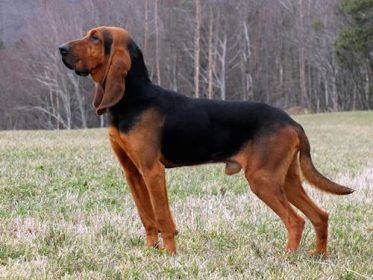
We tend to think of Swiss breeds as the “mountain dogs,” or more specifically, the four Sennenhunds (meaning Swiss mountain dogs), but there is a Swiss hound, as well, with four recognized varieties: The Jura, Lucernese, Berne and Schwyz (or Swiss). There was a fifth, the Thurgovian Hound, but it is definitely extinct.
These dogs differ from each other in coat color, different quarries, and subtle structural contrasts that were influenced by the countries surrounding the Swiss regions where they were developed, and the terrain of that region, but most kennel clubs and canine organizations treat them as a single breed with multiple varieties.
The ancient Bruno Jura hound, developed for hunting in the Jura Mountains on the border, was influenced by France. A Bavarian influence can be seen in the Lucernese hounds, while Bernese hounds, bigger than the other Swiss hounds, reflect a bit of German hunting dogs.
We’ll discuss the other varieties another time, but for the moment, we’ll touch upon the Jura Hound developed in the Middle Ages, and from which two types emerged: The Bruno de Jura, and the St. Hubert.
The Bruno Jura is found in a variety of colors, and its broad head and heavy wrinkles easily distinguishes it from the other Swiss hounds. This is a skilled scent follower, a superb hunter of fox, small deer and hare. It’s closely related to the St. Hubert, but its head resembles the neighboring French hounds that influenced it. It is the less common of the two, and in fact, various sources describe the dog as being extinct, revived, or recreated, depending upon which source is to be believed.
The St. Hubert (or St. Hubert Jura), thought to be a descendant of the French Chien Saint Hubert, is named after St. Hubert, the patron saint of the hunt who, legend says, first bred the dogs in the eighth century. The St. Hubert is a robust, cold scent trailer that’s slightly taller than the Bruno Jura. It’s perfectly suited for harsh mountain conditions, and is surprisingly fast and agile. These dogs were imported to England as early as the 13th century. After Hubert’s death in 726, he was made the patron saint of the hunt, and the breed was named after him.
